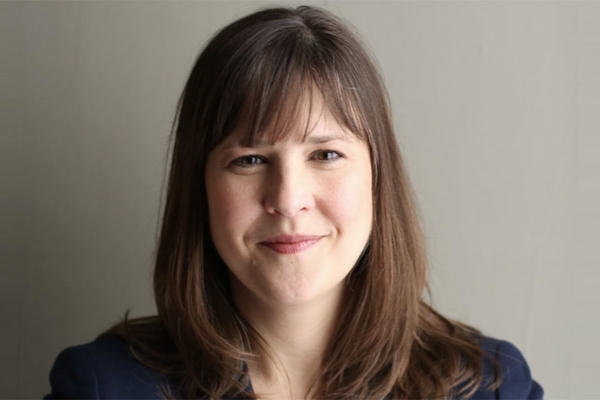Keeping rural health care healthy
As CNO, Margaret Kalina, BSN ’78, is committed to advancing rural health care
May 7, 2024
Colin Sokolowski

Margaret Kalina supervises 300 nursing department employees, along with cardiopulmonary services and the pharmacy departments as chief nursing officer for Alomere Health.
For more than four decades, one person has been at the heart of health care services for Douglas County and the Alexandria, Minnesota area.
Margaret Kalina, MPH, BSN, the vice president of patient services and chief nursing officer for Alomere Health, formerly known as Douglas County Hospital, in Alexandria has held her current role since 1991.
With more than 900 employees, Alomere Health is the largest employer in Douglas County. As a senior member of its administrative team, Kalina supervises 300 nursing department employees, along with cardiopulmonary services and the pharmacy departments.
“My goal is to provide my leaders with everything they need to do their job well,” says Kalina.
That quality of care includes nursing services provided by several different departments that Kalina oversees, including the emergency department, surgical services, and the medical/surgical/pediatrics, obstetrics, and intensive care units. It also means preparing the staff to meet the needs of the community. When respiratory syncytial virus (RSV) rates were up in Minnesota, Kalina helped her staff study best practices to keep affected infants from being transferred out of Alexandria.
“Rural health care is the entry point,” she explains. “We have to identify our patients’ health care needs correctly and then either continue their care locally or send them off to higher levels of care elsewhere.”
During her long career, she’s had a key role in creating a new emergency department and led multimillion-dollar expansions of the operating room and a new inpatient tower. She also helped establish an oncology/chemotherapy unit and helped the hospital transition to electronic health records.
Last year, the National Rural Health Association named Alomere Health one of the Top 20 Rural and Community Hospitals in the nation — the first Minnesota hospital to garner the honor.
“It’s been a great journey to see the growth of Alexandria and the growth of our hospital,” Kalina says. “It’s amazing to see all the different specialties we are able to provide, and how health care has changed dramatically. When I started my career, many of the conditions we would see required a long inpatient stay. Now those same conditions are outpatient visits.”
Nursing programs have changed significantly, too, since Kalina earned her Bachelor of Science in Nursing at the University of Minnesota in 1978.
“In those days, it took us two full days to complete our nursing board exams for licensure. Thanks to an algorithm, it can take some students as little as 45 minutes today,” she says.
Kalina built her career as an obstetrics nurse, a public health nurse, a school nurse, and eventually as the assistant director of nursing for Douglas County Hospital. She was appointed by the governor’s office four times to serve on the Rural Health Advisory Committee, whose 15 members represent licensed health care and higher education professionals, legislative officials, and consumers. The group conducts research and advises the commissioner of health and other state agencies on important rural health issues.
Growing the state’s health care workforce is the committee’s top priority. Enrollment in nursing schools is dropping significantly in Minnesota. According to the Center for Nursing Equity and Excellence, there were 42 fewer nursing students enrolled in Minnesota’s non-metro associate degree programs this past spring than last year. And the number of continuing students dropped by more than 500.
“Minnesota lost a huge portion of its health care workforce during the pandemic,” Kalina says. “What I fear the most is that during COVID, we as nurses went home, looked exhausted and frazzled, and our children probably looked at us and just said, ‘Wow, I’m not doing that.’”
Despite the challenges, Kalina remains optimistic that the nursing profession will bounce back. She continues to actively support health care workforce initiatives around the state, and she has no intention of retiring any time soon.
“I think the workforce outlook will turn around, because the best thing about nursing has always stayed the same: Whether we’re metro or rural nurses, we stand by patients and families during the most critical moments of their lives. It’s the ultimate reward.”
Reprinted with permission from Minnesota Alumni magazine. www.minnesotaalumni.org. Interested in joining the University of Minnesota Alumni Association? Visit umnalumni.org/join


